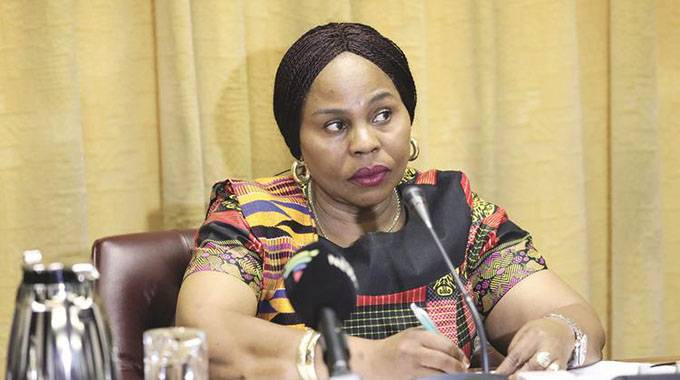Zim pledges to cut carbon emissions by 40pc
ZIMBABWE has pledged to reduce greenhouse gas emissions by 40 percent, from the current levels, by 2050 to avert catastrophic impacts of climate change, according to Information, Publicity and Broadcasting Services Minister Monica Mutsvangwa.
President Mnangagwa is expected to attend the Conference of Parties meeting in Glasgow in the UK from October 31 to November 12 where he will present the country’s mitigation measures.
Zimbabwe is a member of the United Nations Framework Convention on Climate Change, whose major objective is to stabilise and bring down greenhouse gas emissions, such as carbon dioxide, methane and nitrous oxide.
This objective is being fulfilled through the Paris Agreement of 2015 on Climate Change, which mandates all countries to contribute to the reduction of greenhouse gas emissions through Nationally Determined Contributions.
Each country is required to set itself targets on how to reduce emissions and these targets are then reviewed every five years.
Zimbabwe is currently emitting 0,05 percent of all greenhouse emissions, lower than it is capturing.
The southern Africa country has developed the Low Emission Strategy 2020-2050, which identifies mitigation actions to help keep global warming under 1,5 degrees Celsius.
“The draft LEDS (Low Emissions Strategy) has identified 38 mitigation actions across the four Inter-Governmental Panel on Climate Change (IPPC) recognised sectors, and implementation of the mitigation actions will result in 40 percent reduction in emissions,” Minister Mutsvangwa said, adding that the strategy is “Vision 2030 compliant, and contains implementable sustainable climate change mitigation actions.”
The strategy focuses on economic sectors including energy, agriculture, forestry and other land uses, industrial processes and product use as well as waste management. The major thrust of developing Low Emission Development Strategies by UNFCCC member countries is to shift from the traditional fossil fuel-based development to
greener and sustainable pathways, including enhanced use of renewable energy, and the
adoption of green industries and climate smart agriculture.
“The implementation of renewable energy projects and use of more efficient low emission technologies in thermal power plants reflects Government’s commitment towards reduction in emissions,” said Minister Mutsvangwa.
“It should (also) be pointed out that the country has done a lot more in terms of carbon sinking through the various afforestation and reforestation programmes, conservation agriculture (Pfumvudza/Intwasa) and emitting less on its growth trajectory towards Vision 2030.”
About 196 countries have already submitted their nationally determined contributions.
But on Monday, the United Nations secretary-general Antonio Guterres said the nationally determined contributions by parties under the Paris Agreement so far do not represent emission cuts that could keep global warming under 1,5 degrees °C or even 2°C over pre-industrial levels, according to international reports.
The Intergovernmental Panel on Climate Change in its physical science basis report released last month flagged that each of the last four decades has been successively warmer than any decade that preceded it since 1850.
It added that surface temperature was 1.09°C higher in 2011-2020 than during the 1850– 1900 period. Hot extremes; frequency of extremely heavy rainfall; the proportion of severe cyclones among other impacts, have already increased manifold.
As the world heads towards 1.5°C warming, there would be an increasing occurrence of extreme weather events which are unprecedented in the observational record, the IPCC said. In addition, with every additional 0.5°C warming, there will be a discernible increase in intensity and frequency of hot extremes, including heat-waves and flooding
from heavy rainfall and sea-level rise in coastal cities.
Further warming will amplify the loss of seasonal snow cover, melting of glaciers and ice sheets, ocean acidification, marine heat waves, and loss of summer Arctic Sea ice.-The Herald











